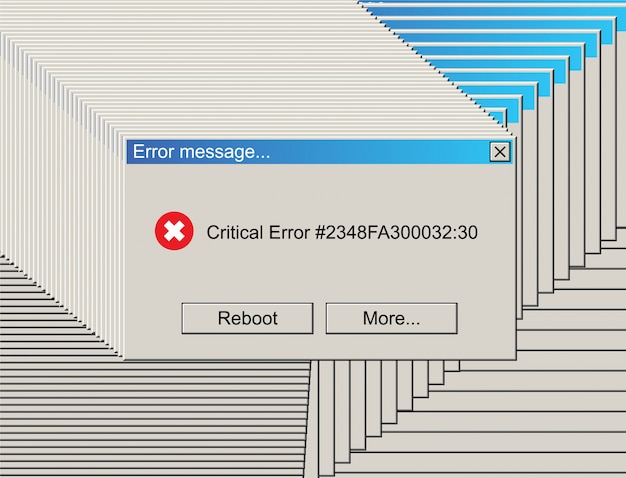Write Clear Emails: Boost Efficiency by 30%

Writing clear and concise emails is crucial for saving time and enhancing communication efficiency by 30%. This involves using direct language, avoiding jargon, and structuring your message for quick comprehension, ultimately leading to better professional outcomes and improved relationships.
In today’s fast-paced world, effective communication is more important than ever. Mastering how to write clear and concise emails: save time and improve communication efficiency by 30% can transform your professional interactions, ensuring your messages are understood quickly and accurately. Let’s dive into the strategies that will make your emails stand out.
Why Clear and Concise Emails Matter
Have you ever spent too much time deciphering a confusing email? Clear and concise emails are not just about saving the recipient’s time, they’re about saving yours too. When your message is straightforward, you’re more likely to get a prompt and accurate response.
Boosting Productivity
A well-written email can streamline workflows and reduce back-and-forth communication. By being direct in your requests and information, you help ensure everyone is on the same page from the start.
Enhancing Professionalism
Your emails reflect your professionalism. Clear communication shows respect for the recipient’s time and demonstrates your ability to articulate thoughts effectively.

To achieve clarity and conciseness, consider these key elements:
- Use simple and direct language.
- Avoid jargon or technical terms that the recipient may not understand.
- Structure your email for easy reading, with a clear subject line and concise paragraphs.
In essence, mastering clear and concise email writing is about effective time management and fostering positive professional relationships. Each word you choose contributes to—or detracts from—the overall efficiency and impact of your message.
Understanding Your Audience and Purpose
Before you start typing, take a moment to consider who you’re writing to and what you want to achieve. Tailoring your message to your audience and purpose can significantly improve communication effectiveness.
Knowing your audience helps you choose the right tone and level of detail. Are you writing to a colleague, a client, or your manager? Each scenario calls for a slightly different approach. For a colleague, you might use a more informal tone, while addressing a client or senior manager typically requires a more formal style.
Defining Your Objective
Every email should have a clear objective. Are you requesting information, providing an update, or seeking approval? Define your purpose upfront to keep your message focused.
Tailoring Your Tone
Adjust your tone to suit your audience and purpose. A respectful and considerate tone makes your message more persuasive and promotes a positive interaction.
Ask yourself these questions before writing:
- Who is my audience?
- What is the purpose of this email?
- What action do I want the recipient to take?
By answering these questions, you set the stage for a more effective and targeted email, minimizing misunderstandings and maximizing the chances of a successful outcome.
Crafting Effective Subject Lines
The subject line is the first impression your email makes. A well-crafted subject line can increase open rates and help the recipient quickly understand the email’s content.
Being Specific
Avoid vague or generic subject lines like “Update” or “Question.” Instead, be specific and indicate the email’s main topic.
Using Action Verbs
Start your subject line with an action verb to clearly communicate the purpose of the email. Examples include “Request,” “Confirm,” or “Urgent.”
Keeping It Short
Aim for a subject line that is concise and easy to read at a glance. Mobile users should be able to see the entire subject line without needing to tap to expand.

Here are a few examples of effective subject lines:
- Request: Meeting Time for Project X Discussion
- Confirm: Presentation Materials Received
- Urgent: Action Required on Contract Approval
Investing time in crafting effective subject lines not only improves email open rates but also helps recipients prioritize and manage their inbox more efficiently. This small change can lead to significant improvements in overall communication effectiveness.
Using Clear and Direct Language
Clarity in email writing means using language that is easy to understand and avoids ambiguity. Direct language gets straight to the point without unnecessary fluff or jargon.
One of the most common pitfalls in email communication is the use of jargon or technical terms that the recipient may not understand. This can lead to confusion and delay the communication process. Aim for language that is universally understood by your audience.
Avoiding Jargon
Refrain from using industry-specific terms or acronyms unless you are certain the recipient is familiar with them. If you must use such terms, provide a brief explanation.
Being Specific
Vague statements can lead to misinterpretations. Provide specific details and examples to ensure your message is clear and unambiguous.
- Replace “as soon as possible” with a specific date and time.
- Instead of saying “the project,” name the specific project.
Examples of clear and direct language:
- Instead of “Please be advised that…”, use “Please note…”
- Instead of “In order to…”, use “To…”
By adopting clear and direct language, you not only enhance the readability of your emails but also demonstrate professionalism and respect for the recipient’s time. It ensures that your message is accurately understood, leading to more effective communication outcomes.
Structuring Your Email for Readability
A well-structured email is easy to scan and understand at a glance. Use formatting techniques such as paragraphs, bullet points, and headings to break up the text and highlight important information.
Using Paragraphs
Keep paragraphs short and focused on a single idea. This makes the email easier to digest and helps the reader follow your line of thought.
Employing Bullet Points
Use bullet points to list items, actions, or key takeaways. Bullet points help to organize information and make it visually appealing.
Highlighting Key Information
Use bold or italics sparingly to emphasize important points. Overusing these formatting tools can make the email look cluttered and distract from the message.
Consider these formatting tips:
- Use headings to divide the email into clear sections.
- Limit each paragraph to no more than three or four sentences.
- Use white space to create visual breaks and improve readability.
By structuring your email for readability, you make it easier for the recipient to quickly grasp the main points and take the necessary actions. This approach enhances communication efficiency and shows that you value the recipient’s time.
Proofreading and Editing for Clarity
Before hitting send, always take a moment to proofread and edit your email. This helps catch any errors in grammar, spelling, or punctuation that could detract from your message.
Checking for Errors
Read your email carefully, looking for any mistakes. It can be helpful to read the email aloud, as this can help you identify awkward phrasing or sentences.
Ensuring Tone
Double-check the overall tone of your email. Ensure that your message conveys the intended level of formality and respect.
Seeking Feedback
If the email is particularly important, consider asking a colleague to review it before you send it. A fresh pair of eyes can often catch errors that you may have missed.
Effective proofreading involves several steps:
- Use grammar and spell-check tools to catch basic errors.
- Read the email from the perspective of the recipient.
- Ensure all links are working correctly.
By incorporating proofreading and editing into your email writing process, you enhance the credibility of your message and ensure that your intended meaning is accurately conveyed. This final step is crucial for upholding professional standards and fostering clear communication.
| Key Point | Brief Description |
|---|---|
| 🎯 Define Purpose | Clarify the email’s goal before writing to maintain focus. |
| ✍️ Use Simple Language | Avoid jargon and complex terms for easy understanding. |
| ✔️ Proofread Always | Check for errors before sending to maintain credibility. |
Frequently Asked Questions
▼
Clarity ensures your message is easily understood, preventing misunderstandings. Clear emails save time, reduce back-and-forth communication, and promote a positive professional image.
▼
Be specific by stating the main topic. Use action verbs to indicate the email’s purpose. Keep it short to ensure recipients grasp the email’s importance quickly and act accordingly.
▼
Avoid jargon or technical terms. Don’t be vague; provide specific details. Refrain from using overly formal language and forgetting to proofread before sending to fix grammatical or spelling errors.
▼
Well-structured emails, with clear paragraphs and headings, improve readability. Using bullet points helps organize information, enabling recipients to quickly identify key points, improving efficiency.
▼
Proofreading ensures your email is free of errors, enhancing your credibility. A well-proofread email conveys professionalism, helping to convey your message accurately and with confidence.
Conclusion
Mastering the art of writing clear and concise emails is a skill that pays dividends in professional settings. By embracing these strategies, you can significantly improve communication efficiency, save valuable time, and foster stronger professional relationships. Start applying these techniques today and experience the transformative impact on your daily interactions.





